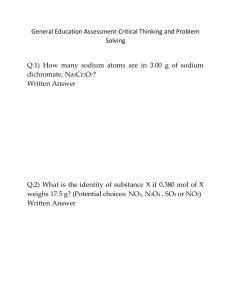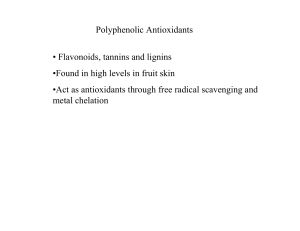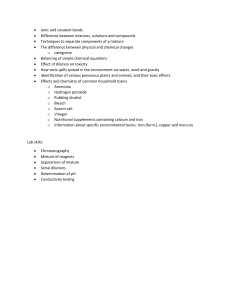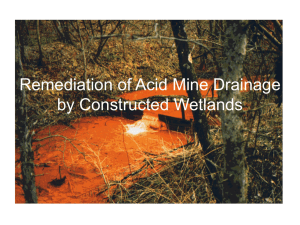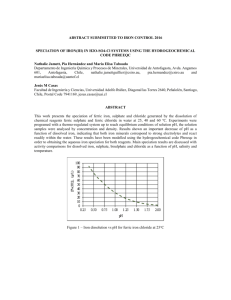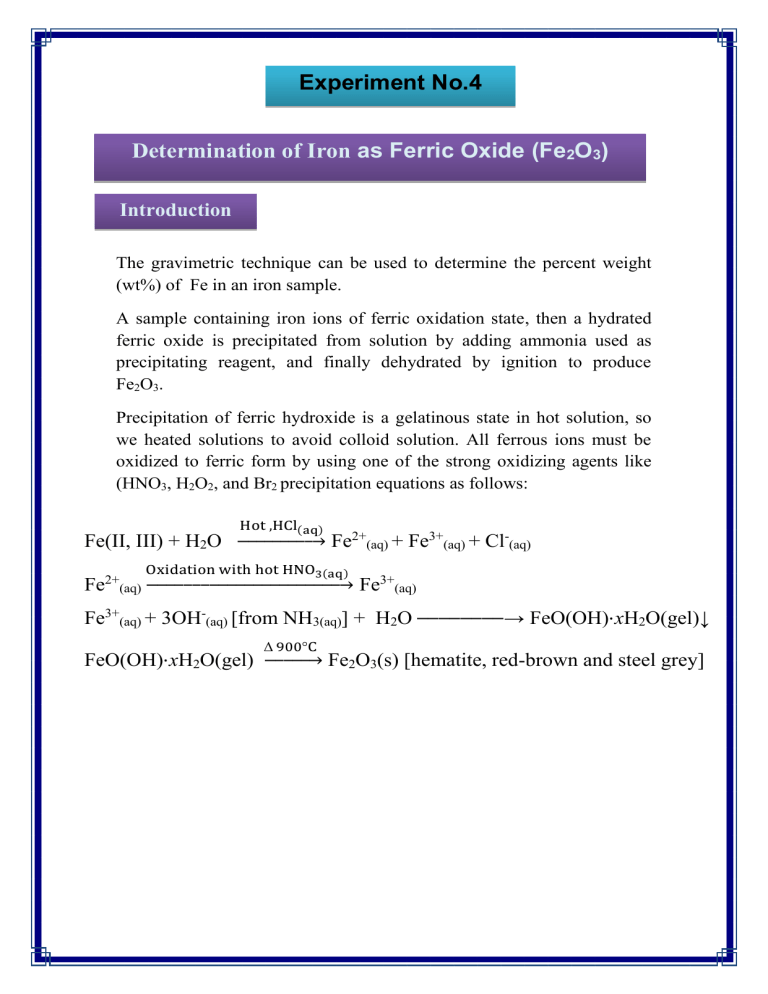
Experiment No.4 Determination of Iron as Ferric Oxide (Fe2O3) Introduction The gravimetric technique can be used to determine the percent weight (wt%) of Fe in an iron sample. A sample containing iron ions of ferric oxidation state, then a hydrated ferric oxide is precipitated from solution by adding ammonia used as precipitating reagent, and finally dehydrated by ignition to produce Fe2O3. Precipitation of ferric hydroxide is a gelatinous state in hot solution, so we heated solutions to avoid colloid solution. All ferrous ions must be oxidized to ferric form by using one of the strong oxidizing agents like (HNO3, H2O2, and Br2 precipitation equations as follows: Hot ,HCl(aq) Fe(II, III) + H2O → 2+ Fe Fe2+(aq) + Fe3+(aq) + Cl-(aq) Oxidation with hot HNO3(aq) (aq) → Fe3+(aq) Fe3+(aq) + 3OH-(aq) [from NH3(aq)] + H2O Δ 900°C FeO(OH)⋅xH2O(gel) → → FeO(OH)⋅xH2O(gel)↓ Fe2O3(s) [hematite, red-brown and steel grey] Materials 1. A sample containing iron salt as [Fe(NO3) 3, Fe2(SO4)3, FeCl3. 2. Diluted hydrochloric acid HCl(1:1) and concentrated nitric acid (HNO3). 3. Diluted ammonia solution. 4. NH4NO3 1% solution. 5. Watch glass, beaker, ashless filter paper and balance. Procedure 1. Weight (0.4)g of ferric salt in (400mL) beaker clean and dry. 2. Dissolve sample with 30mL of distilled water, then add (5mL) HCl. 3. Heat the solution until boiling, add (1mL) of HNO3 gradually then heat for a few minutes to ensure that all Fe(II) is oxidized to Fe (III) and the solution became clear yellow. 4. Dilute the sample to (100mL) by distilled water then heating the solution until boil after that (20-25mL) of ammonia solution adding slowly with stirring until the odder of excess ammonia will be smells. 5. Boil the solution for (1min), then leave it to room temperature for digestion, the precipitate will settle and the solution must be colorless. 6. Filtrate the solution slowly using ashless filter paper (Whatman 41, 110-mm diameter) then washing the precipitate with solution of hot NH4NO3 until Cl- ions will be remove from the precipitate (Tested by AgNO3). 7. Weight ceramic crucibles after heating for (15min) to redness degree and cooled to room temperature. 8. Transfer the precipitate and filter paper to the crucible and ignite firstly by benzene burner to charring filter paper, then transfer crucible to furnace at 500°C for 30min after that cooling it to room temperature in a desiccator. Finally weight the crucible. Calculation 𝐆. 𝐅 = 𝐀. 𝐖𝐭. (𝐅𝐞) × 𝟐 𝐌. 𝐖𝐭. (𝐅𝐞𝟐 𝐎𝟑 ) 𝐖𝐭. 𝐅𝐞 = 𝐖𝐭. 𝐅𝐞𝟐 𝐎𝟑 × 𝐆. 𝐅 𝐅𝐞% = 𝐖𝐭. 𝐅𝐞 × 𝟏𝟎𝟎 𝐖𝐭. 𝐨𝐟 𝐬𝐚𝐦𝐩𝐥𝐞 Discussion 1. What is the effect of ammonium hydroxide addition to the ferric salt solution? Explain with equations? 2. What is the chemical formula of precipitated and salt iron? 3. Calculate the weight of the ferric chloride in (500 ml) of the sample if the final precipitation weight is 0.5g and what is the percentage of iron in the sample? 4. A sample of is magnetite, not pure Fe3O4 weighed 0.5g converted chemically reaction to the ferric oxide weight 0.41g What is the percentage of Fe3O4 in the magnetite? 5. What is the purpose of concentrated HNO3 addition the produced solution from the added of HCl to ferric salt?

